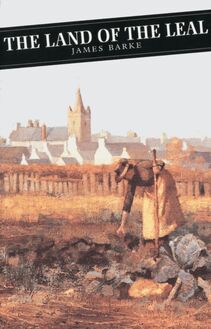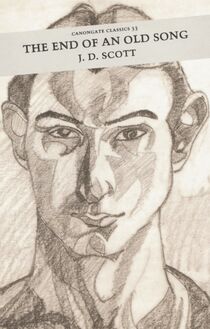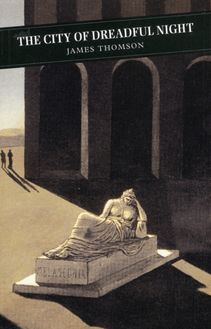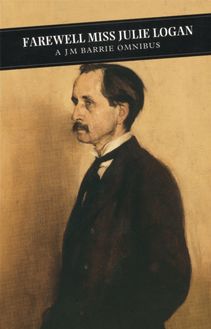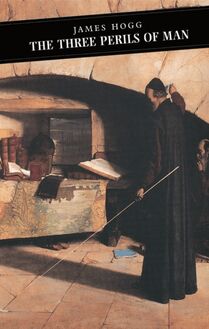Flemington And Tales From Angus , livre ebook
317
pages
English
Ebooks
2010
Vous pourrez modifier la taille du texte de cet ouvrage
Obtenez un accès à la bibliothèque pour le consulter en ligne En savoir plus
Découvre YouScribe en t'inscrivant gratuitement
Découvre YouScribe en t'inscrivant gratuitement
317
pages
English
Ebooks
2010
Vous pourrez modifier la taille du texte de cet ouvrage
Obtenez un accès à la bibliothèque pour le consulter en ligne En savoir plus
Publié par
Date de parution
01 juillet 2010
Nombre de lectures
1
EAN13
9781847675422
Langue
English
Publié par
Date de parution
01 juillet 2010
Nombre de lectures
1
EAN13
9781847675422
Langue
English
Violet Jacob
FLEMINGTON TALES FROM ANGUS
edited and introduced by
Carol Anderson
Contents
TALES FROM ANGUS
Introduction
Acknowledgments
Notes
FLEMINGTON
Introduction
Acknowledgements
Note on the Text
Author’s Note
Book I
Book II
Book III
Notes
Glossary
Other Books by Violet Jacob
TALES FROM ANGUS
Contents
Introduction
Acknowledgements
‘Thievie’
The Disgracefulness of Auntie Thompson
The Debatable Land
The Fiddler
A Middle-Aged Drama
Annie Cargill
The Watch-Tower
The Figurehead
Euphemia
The Overthrow of Adam Pitcaithley
The Lum Hat
The Fifty-Eight Wild Swans
The Yellow Dog
Anderson
Notes
Introduction
MANY OF the stories in this volume are drawn from Tales of My Own Country , first published in 1922, and except for a couple of tales which have been anthologised, long out of print. The title of that volume suggests the importance of location: Violet Jacob wants to map out her ‘own country’ – to record and give imaginative life to places she knew and loved. Other work included here is drawn from The Lum Hat and Other Stories ; this was published posthumously (in 1982), but the stories date back to the 1920s and 30s, and are set in the same landscapes as those in the earlier volume.
Born at the House of Dun, near the east coast port of Montrose, in 1863, Violet Kennedy-Erskine played as a child on the family estate a few miles from the town, overlooking the stretch of tidal waters known as the Basin. In her family history, The Lairds of Dun (1931), Jacob presents an evocative thumbnail sketch of her home territory:
The House of Dun stands in the county of Angus, at the far eastern end of Strathmore through which the South Esk runs to empty itself into the Basin of Montrose. Between the tidal marshes of the Basin and the North Sea there is a strip of land on which the town of Montrose is built, and the river washes its quays on its seaward way through a harbour which, within living memory, was full of fair-haired, ear-ringed sailors ashore from the vessels in the Baltic trade. In the back streets near the dock a touch of Scandinavia lingered until a couple of score years ago in spite of the deadly uniformity that was so soon to begin its creeping progress over the world. But a stranger may yet look up at the pediment of the Town House and learn from the mermaids supporting the arms of Montrose the amphibious character of the place. The tall steeple of the parish kirk, seen from far out at sea, throws its shadow at low tide on the wet sands of the Basin; and on winter nights the sound of the bar thundering beyond it is carried far in across the fields.
The Grampians lie along the northern horizon, distant enough to be a shadow-swept mystery and near enough to be a rampart between Angus and Mearns and the Highlands. The broad spaces of sky hang over a land hampered by no fretful detail of close lane and narrow field, steeped in a light that seems, to those who have eyes for it, to belong to no other region.
A rich farming country of spacious arable land and heavy woods slopes to the hills; the cottages and farms with which it is sparsely sown catch the declining gleam on their walls; and the self-contained look of the white gable-ends, aloof against the background hill and tree, strikes the heart of the home-coming son of Angus with a charm as of some attractive trick of manner in a familiar friend (pp. 1–2).
This is the world of Jacob’s short fiction. Its landscapes and towns are based on real places, many of them named or easily identifiable, some lightly fictionalised. Several of the stories here, including ‘The Figurehead’ and the novella ‘The Lum Hat’, are clearly set in or near Montrose. Others portray little inland parishes (key scenes often actually feature the church) and farming communities, while ‘The Watch-Tower’ is set in Glenesk. Angus is a varied region, both Lowland and Highland, encompassing sea-scape and rich agricultural land. Jacob’s ‘country’, too, is varied. Its boundaries and borderlines are both actual and symbolic; for of course, although based on a physical reality, this ‘country’ is also fictional. In a note to Tales of My Own Country Jacob states that it contains ‘portraits of places’, but any portrait involves selection and interpretation. Jacob’s ‘country’ is as much a landscape of the mind, of imagination and memory as it is a real place,
Like Stevenson, Violet Jacob had a strong sense of the suggestiveness of place. In a short essay, ‘From the Corner Seat’ (in Country Life , 14th May, 1910), echoing Stevenson’s ‘A Gossip on Romance’, she remarks the powerful glimpses caught by the traveller on a train of ‘that misty borderland of illusion lying just beyond our reach’; real places, briefly seen through a window, are evocative of mystery and of undeveloped narratives. Through the frames of Violet Jacob’s short fiction, too, the reader catches sight of a real yet imaginary country whose complexity is economically suggested.
Violet Jacob’s ‘own country’ has several dimensions in the temporal sense. like Stevenson a long-term exile, she seemed driven to capture in her writing the well-loved landscapes and people of her youth. While spending much of her adult life in India and Egypt, England and Wales, Jacob wrote frequently of Angus in her fiction and poetry; she visited when she could, but drew constantly on memory and on oral and written history. She researched her own family, writing, at the end of The Lairds of Dun , with a sense of wonder and respect, of ‘that partly discovered and partly undiscovered country, the world that was’. Imaginatively compelled by the past, Jacob locates many of her short stories in the eighteenth and nineteenth centuries, with others set closer to her own age; like many Scottish writers from Scott to Lewis Grassic Gibbon, desiring to record a world that was passing, Jacob vividly recreates societies just slipping from view. Sometimes there are references to real people and events, but this is art, not history, and these are carefully crafted stories. In some, like ‘The Fiddler’, there are tales within tales, where one time period provides the framework, enclosing memories of another, implying strong bonds between past and present. Elsewhere landscape suggests a sense of the deeper past, bringing intimations of mortality: ‘on her left the sea lay cold and hidden by the dunes along the shore. Its voice, like the voice of a shell held to the ear, had the breath of a far away history reaching from childhood to death, from time to the end of time’ (‘The Lum Hat’).
Violet Jacob delineates little-recognised places and their too easily-forgotten histories; but these stories are also, importantly, portraits of people. Jacob refers in one tale to those who have ‘marginal sketches on the maps of their minds; unofficial scraps which give outside points of view’ (‘The Overthrow of Adam Pitcaithley’), and her own work might be seen in this light. Like James Joyce in Dubliners (1914), Jacob illustrates lives ‘outside’ the fashionable world; lives that might be seen as obscure, sometimes frustrated. Although the writer herself came from an ancient landed family, her work depicts characters of various social classes. Many are poor working people: farm-labourers and servants, quiet young men, solitary shepherds and strong-willed country-women such as the spirited, red-haired Euphemia in the story of that name, or Auntie Thompson with her ‘large, determined pink face’. These people are given voice, and the splendid dialogue in the vernacular is cannily deployed, the minister in ‘The Fiddler’, for instance, lapsing into Scots only at moments of high emotion.
Jacob’s characters are often ‘marginal’ figures within communities, like Phemie Moir in ‘The Fiddler’, or Annie Cargill, ‘just a lassie’ to the men who dismiss her memory, her grave bearing ‘no date, no text, not the baldest record’. These women have sad fates, though others survive, like Jessie-Mary, the orphan in ‘The Debatable Land’, who escapes into the free ‘no-man’s land’, departing at the end with a passing tinker. Such figures, anticipatory of Jessie Kesson’s outsiders or ‘ootlins’, tend to be sympathetically represented, even if not all (Janet Robb in ‘Thievie’, for instance) are wholly likeable, and some, like the sheepstealer in ‘The Watch-Tower’, are lawbreakers. Their plight is human, and touching. ‘A Middle-Aged Drama’ is moving especially because the focus is on a couple whose lives – and love – are not the stuff of conventional romance. These small Angus communities themselves might seem odd or unimportant if viewed from a distant perspective, like that of the visiting Englishman in ‘The Fiddler’, but are rendered significant by a writer dwelling on their particularities.
There are reminders of a larger context, though any assumption of its superiority is undermined. In ‘A Middle-Aged Drama’, Hedderwick’s son Robert ‘who was apprenticed to a watch-maker in Dundee, came home at intervals to spend Sunday with his father and to impress the parish with that knowledge of men and matters which he believed to be the exclusive possession of dwellers in manufacturing towns’. But wealth, if not wisdom, does tend to exist elsewhere; like Lewis Grassic Gibbon writing a little later, Jacob notes the diaspora of poor rural folk to Canada and America. Fortunes earned by those who have lighted out for ‘the colonies’ are key to the plots of ‘Auntie Thompson’ and ‘Thievie’. And those who lead wandering lives are contrasted in Jacob’s fiction with narrower, staider folk, like Malvina Birse (in ‘The Figurehead’) or genteel Christina Mills, of whom we learn that the sea-captain and the gipsy woman ‘touched some sleeping thing in her mind which feared to be awakened’. Freedom and constraint are recurring concerns.
The boundaries of human life themselves are not absolute. Just as Jacob’


